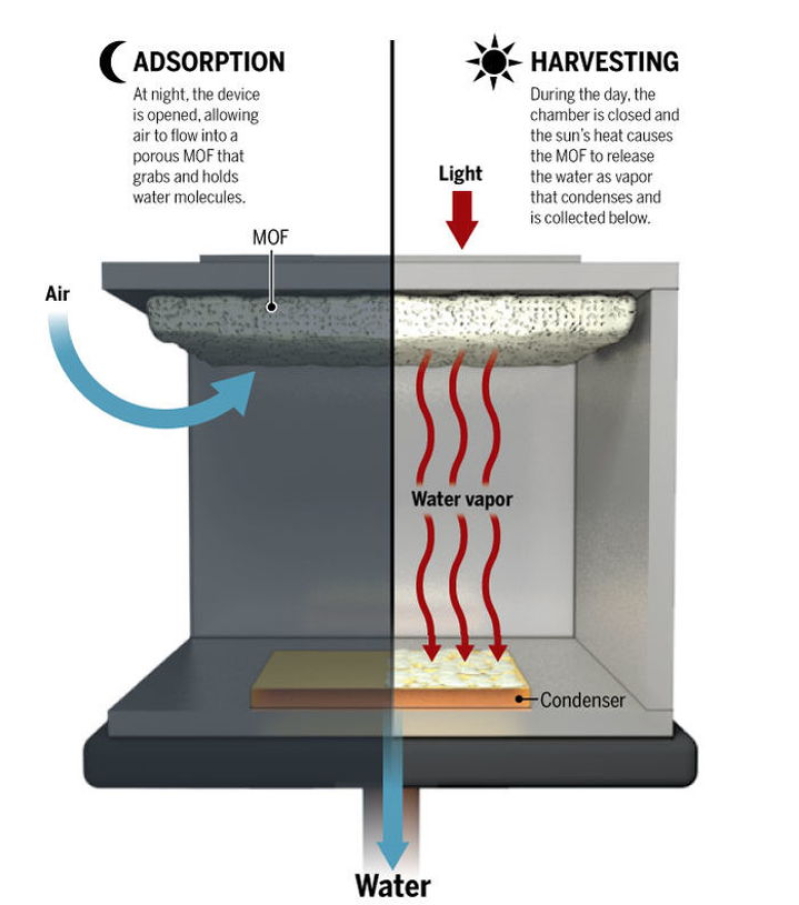
If there is one word which cannot be used to describe a desert, it would be “verdant”. No desert will boast of lush greenery across acres and acres of fertile soil, although there might be an oasis from time to time that can support just a small tribe and a few camels. Deserts are notoriously dry, and the image of a vulture feeding off a carcass with half its skeleton showing is something that many of us are familiar with. Being marooned in a desert and not armed with any kind of survival skills can be a nightmare to many, as dying of thirst is not the best way to go. What if I were to present a new device which is capable of actually pulling water straight out of the desert air? It sounds like magic, but it is not.
To sweeten the deal, this particular water harvesting device is solar powered -- and we all know just how abundant sunlight is in a desert environment. The device is sponge-like in nature, where it will harness the power of the sun in order to suck water vapor from the surrounding air, never mind that humidity levels are extremely low. This particular device is said to be able to produce close to 3 liters of water in a single day, which is more than enough to sustain a human being even in a desert. Researchers claim that future models will be more efficient than that, and that might translate to homes located in extremely dry areas worldwide can obtain life giving water without having to travel miles and miles away just to obtain a few buckets from a deep well. It is certainly a device that will change the life of millions of people worldwide.
Somehow I can’t help but wonder -- is this the most advanced version of a dehumidifier to date? After all, dehumidifiers make sure that a room or home does not easily grow mold by sucking out the moisture from the air, and at the end of the day, you will have to pour all of the water away somewhere else.
The new water harvester uses metal organic framework crystals that have been pressed into a thin sheet of copper metal, which is placed between a solar absorber and a condenser plate. This idea will take advantage of the theory that approximately 13 trillion liters of water are floating in the atmosphere at any one point in time. This is approximately the equivalent of 10% of all of the freshwater scattered across our planet’s lakes and rivers. If successful, it would be the most efficient manner of obtaining water from the atmosphere to date.
This group of researchers with Omar Yaghi at the helm have managed to work with metal organic frameworks, better known as MOFs. Yaghi developed the first MOFs over two decades ago, and such porous crystals which form continuous 3D networks are the basis for this modern day miracle.
Mercouri Kanatzidis, a chemist at Northwestern University in Evanston, Illinois, commented on this project, “It has been a longstanding dream. This demonstration … is a significant proof of concept.” With more room for improvement, things will certainly be a whole lot better down the road as additional research is performed and realized.







